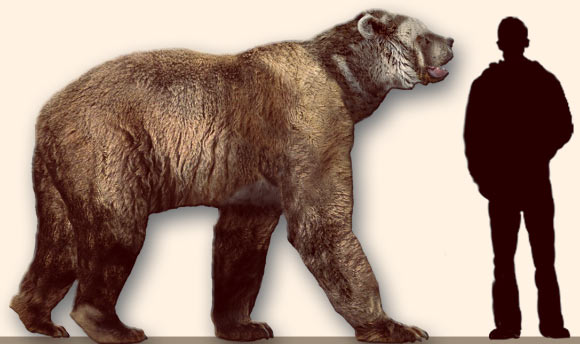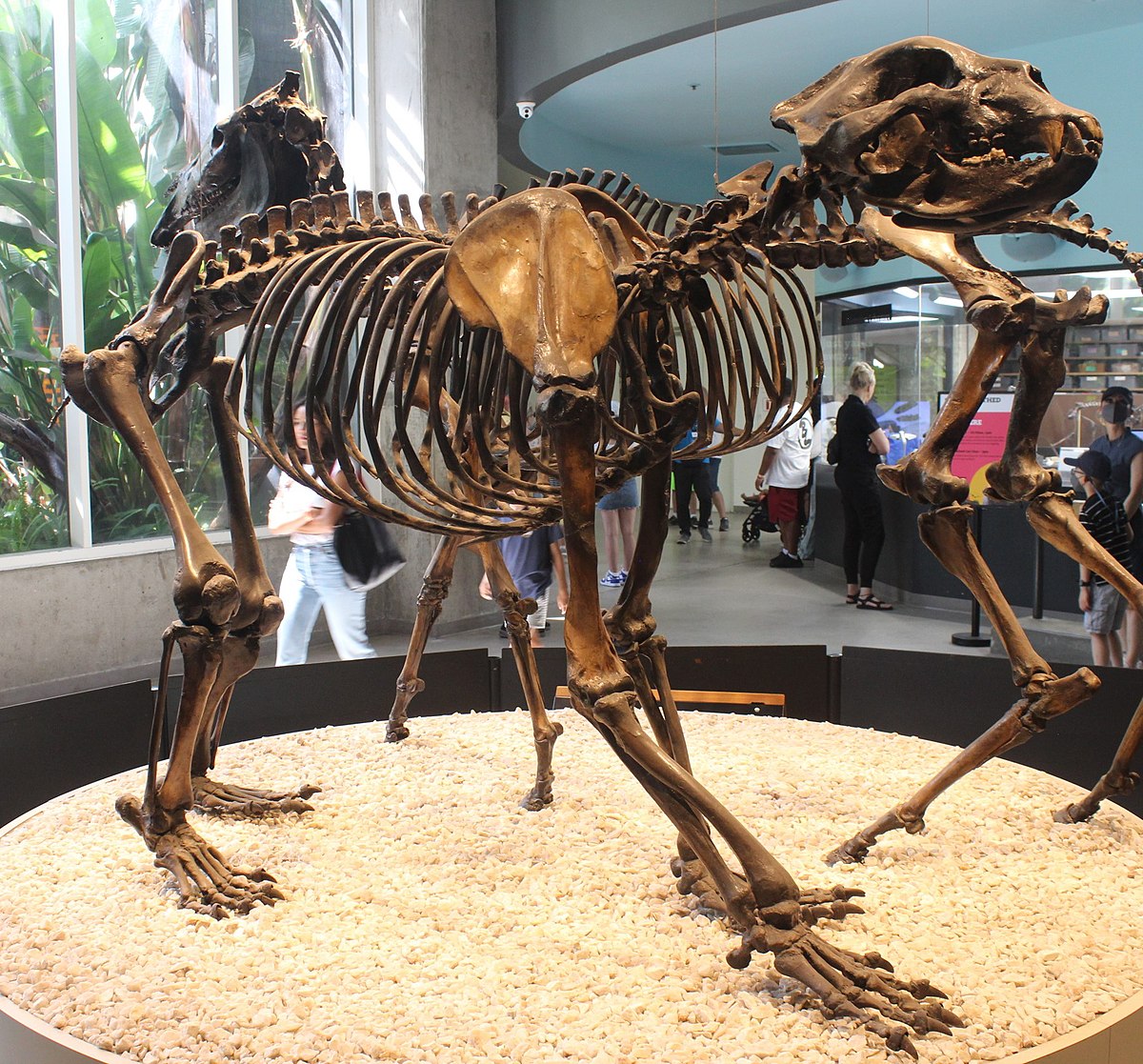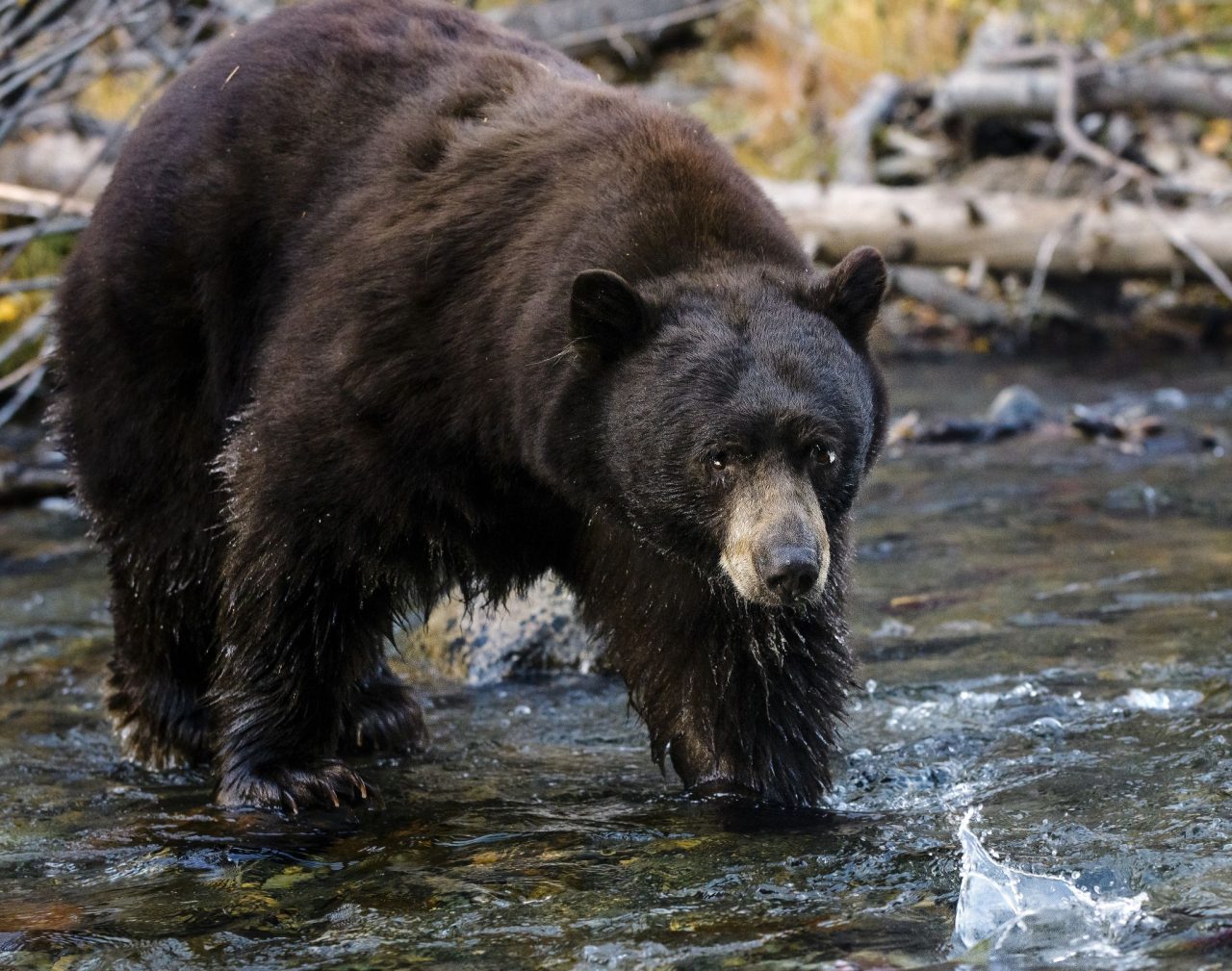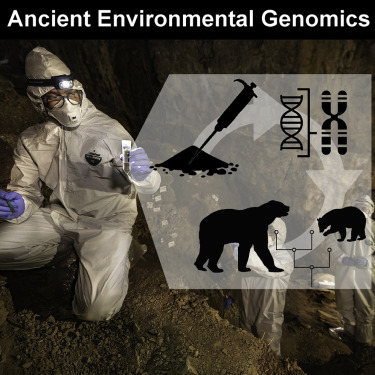A study led by Dr. Kieren Mitchell of the University of Adelaide sheds new light on the evolution of what are believed to be the largest bears that ever lived on Earth.

Reconstruction of the giant, short-faced North American bear Arctodus simus. Image credit: Daniel Reed / CC BY-SA 3.0.
Giant bears (greater than 800-1,000 kg) roamed both North and South America during the Pleistocene, 2.5 million to 11,000 years ago.
These animals belonged to a now practically extinct subfamily of bears, Tremarctinae, which is today only represented by the Andean spectacled bear (Tremarctos ornatus), a largely herbivorous bear that is found in South America.
The giant North American bears (genus Arctodus) and South American bears (genus Arctotherium) have long been believed to be each others’ closest relative.

However, by comparing ancient mitochondrial DNA data obtained from representatives of the two extinct genera and comparing them with the living species, Dr. Mitchell and co-authors were able to show that Arctotherium is most closely related to the Andean spectacled bear and not Arctodus.
“In this study, we sequenced a mitochondrial genome from an Arctotherium femur preserved in a Chilean cave,” the scientists explained.

“Our molecular phylogenetic analyses revealed that the South American short-faced bears were more closely related to the extant South American spectacled bear than to the North American short-faced bears.”
The implication of this result is that these bears represent a remarkable instance of convergent evolution, as giant bears appear to have evolved independently in both North and South America.

“This convergent evolution would have arisen in response to similar environmental conditions on both continents, most likely an abundance of large herbivore carcasses (killed by smaller predators), which Arctodus and Arctotherium could effectively dominate, and a lack of competing scavengers,” Dr. Mitchell and co-authors said.
Source: sci.news








